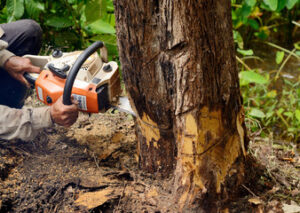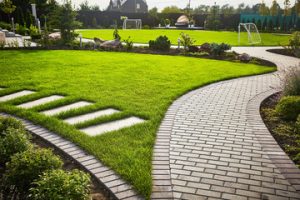Clean spaces define how people live and interact. The way a place is cleared shapes the possibilities for what comes next. Rubbish removal and demolition are not just about clearing waste or tearing down buildings. They are essential steps toward transforming spaces responsibly and sustainably.

The concept of clearing a site has changed over time. What was once a task focused purely on speed and force now involves strategic planning and environmental awareness. Rubbish is no longer treated as useless debris but as potential material for repurposing. Demolition is also being reimagined, shifting from brute destruction to calculated deconstruction. Visit their Website to learn more.
At the core of this change is a deeper understanding of resource cycles. Every item removed from a site holds embedded energy and value. By sorting and recovering materials, rubbish removal turns waste into a resource stream. This approach reduces landfill use and encourages a more circular flow of materials.
The rise of sustainable demolition practices has followed a similar path. Instead of explosive destruction, many projects now carefully dismantle structures piece by piece. This precision allows valuable components like steel, glass, and timber to be salvaged. It also minimizes environmental disruption, making redevelopment safer and cleaner.
One of the emerging priorities is the health of surrounding communities. Demolition can release dust, toxins, and noise if done carelessly. Modern techniques use water suppression, noise barriers, and careful scheduling to protect nearby residents. These steps turn demolition into a more considerate and responsible process.
Technology is playing a powerful role in these evolving practices. Advanced machinery equipped with precision controls can separate materials with minimal damage. Digital mapping and 3D scanning allow teams to plan removals and demolitions with pinpoint accuracy. These innovations make projects faster, safer, and less wasteful.
Artificial intelligence is also transforming how rubbish removal is approached. Smart sorting systems can identify materials automatically and direct them to appropriate recycling streams. This reduces the need for manual labor and improves recovery rates. In demolition, AI models can predict structural weaknesses, guiding safer dismantling strategies.
Another significant shift is the focus on pre-demolition audits. Before a building is taken down, specialists assess what materials can be reused or recycled. They also check for hazardous substances that require careful handling. These audits ensure that the demolition process aligns with environmental regulations and sustainability goals.
The future of rubbish removal is increasingly tied to urban resilience. Cities are generating more waste than ever, and managing it responsibly is essential. By integrating removal services into urban planning, municipalities can maintain cleaner, healthier spaces. Proper waste management also supports broader goals like climate mitigation and resource efficiency.
Demolition, too, is part of this urban transformation. As older structures reach the end of their lifespans, their removal opens space for new possibilities. Redevelopment can include housing, green spaces, or public infrastructure. Thoughtful demolition ensures that the transition from old to new is smooth and sustainable.
Community engagement is another emerging factor. Residents often have concerns about noise, dust, and traffic during demolition or waste removal. Transparent communication and involvement in planning can ease these concerns. It also builds trust, showing that these processes are carried out with community well-being in mind.
Even small-scale rubbish removal is evolving. Homeowners and businesses are embracing responsible disposal habits, from sorting materials to hiring eco-conscious services. This grassroots participation complements larger industrial efforts. It shows that every level of society plays a role in shaping cleaner spaces.
One innovative concept gaining attention is adaptive reuse. Instead of demolishing an entire structure, parts of it are preserved and integrated into new designs. This reduces waste and retains historical or cultural value. It also demonstrates that demolition and preservation can work together.
The economic landscape of removal and demolition is also changing. Salvaged materials often have significant market value, creating new revenue streams. Specialized recycling facilities are expanding, turning debris into products like aggregates and insulation. This economic potential further incentivizes sustainable practices.
Safety remains a central concern, and modern methods reflect that priority. From remote-controlled machinery to automated sensors, technology reduces human exposure to hazardous conditions. Careful planning and risk assessments ensure that every step of the process is controlled. Safety and efficiency now go hand in hand.
Environmental impact assessments are becoming standard in demolition projects. These studies analyze how the process will affect soil, water, air, and local ecosystems. By addressing potential risks beforehand, teams can design mitigation strategies. This proactive approach aligns removal and demolition with broader environmental goals.
Another area of innovation is the repurposing of demolition sites themselves. Once cleared, these spaces can be transformed into community gardens, renewable energy facilities, or public parks. Such projects turn a moment of destruction into an opportunity for regeneration. They also demonstrate how thoughtful planning extends beyond the demolition itself.
Waste-to-energy conversion is adding another dimension to rubbish removal. Non-recyclable materials can be processed into fuel for electricity generation. This reduces landfill demand and provides renewable energy sources. It also illustrates how waste management and energy systems can be interconnected.
Construction and demolition waste management policies are evolving to support these practices. Regulations now require documentation of recycling rates and disposal methods. Compliance is no longer optional; it’s part of responsible project execution. These policies push the industry toward higher standards and more innovative solutions.
Education and training are crucial for sustaining these advancements. Workers need updated skills to operate new technologies and follow new regulations. Ongoing training ensures that best practices are consistently applied. It also helps create a workforce ready to embrace the future of removal and demolition.
The aesthetic dimension of demolition is also gaining attention. Controlled demolitions can be staged to preserve visual harmony in urban environments. Landscaping and interim site treatments can turn cleared land into temporary art spaces or public plazas. These creative approaches expand the meaning of demolition beyond destruction.
Partnerships are emerging as a powerful force for innovation. Collaborations between engineers, environmental scientists, and community organizations bring diverse perspectives. Together, they design solutions that balance technical performance with social and ecological responsibility. This collaborative approach defines the next era of rubbish removal and demolition.
Climate adaptation is another driver shaping the industry’s future. As weather events become more severe, removal and demolition must account for resilience. Structures may be dismantled to make way for flood defenses or more climate-ready infrastructure. These decisions connect immediate actions to long-term survival.
Cultural attitudes toward waste and demolition are shifting as well. What was once seen as a dirty, destructive necessity is now recognized as an opportunity for renewal. People are more aware of the environmental and social consequences of how we clear spaces. This awareness pushes companies and governments to do better.
Circular economy principles are guiding much of this transformation. The goal is no longer to simply remove or demolish but to keep materials in use for as long as possible. Every ton of debris diverted from landfills is a step toward that goal. Every salvaged component represents value that would otherwise be lost.
This evolving perspective is reshaping project timelines too. Rushed demolitions are being replaced with carefully phased dismantling plans. Rubbish removal schedules are integrated with recycling facility capacities. These adjustments ensure that environmental goals are met without compromising project efficiency.
Even design is being influenced by future removal and demolition considerations. Architects are now creating buildings with disassembly in mind. Modular components can be easily removed, reused, or recycled at the end of their life. This “design for deconstruction” philosophy is redefining how structures are built and unbuilt.
Public policy will continue to be a major force behind progress. Incentives for recycling, penalties for improper disposal, and funding for green technologies all drive change. Governments and private sectors are learning that cooperation is key to large-scale impact. Shared responsibility creates more effective and equitable outcomes.
The future promises even more sophisticated integration between removal, demolition, and redevelopment. Predictive modeling could help determine the most efficient strategies before a project begins. Drone-based inspections could improve safety and reduce costs. Innovations like these will continue to blur the line between clearing and creating.
Ultimately, rubbish removal and demolition are about more than clearing space. They represent a commitment to renewal, responsibility, and respect for the environment. They show that even in destruction, there is potential for creation. And they remind us that shaping the spaces we live in is not just about what we build, but also how we unbuild.
Every cleared site is a blank page waiting to be written on. Every piece of salvaged material is a bridge between past and future. The way we approach rubbish and demolition today will define the spaces of tomorrow. And in those spaces, cleaner, safer, and more sustainable worlds can emerge.




